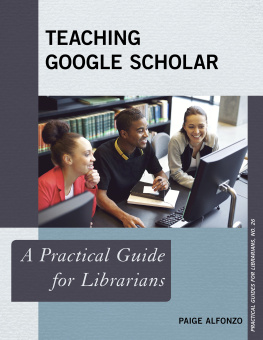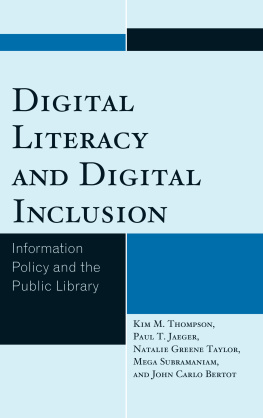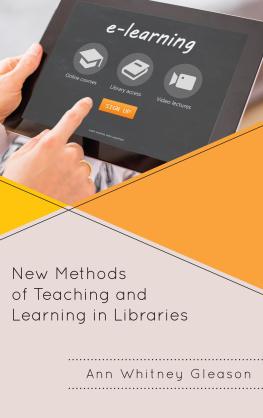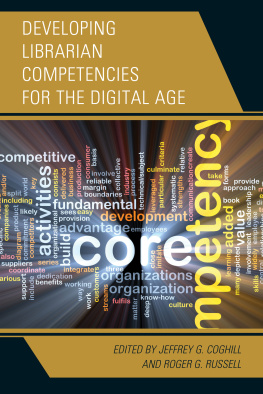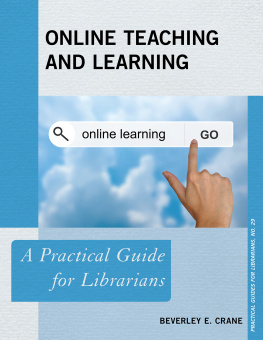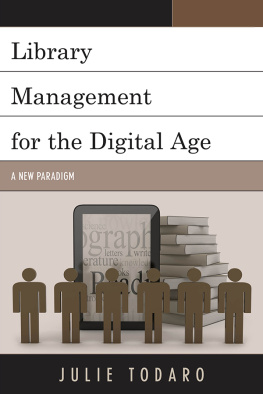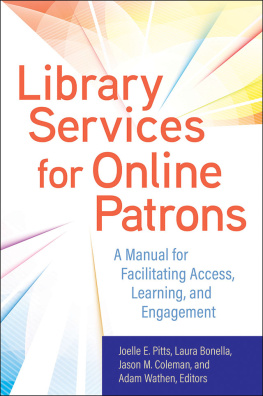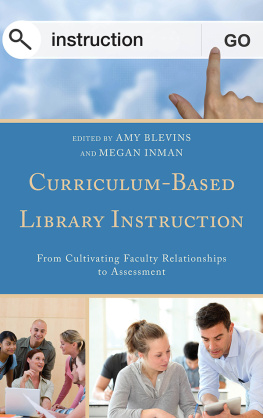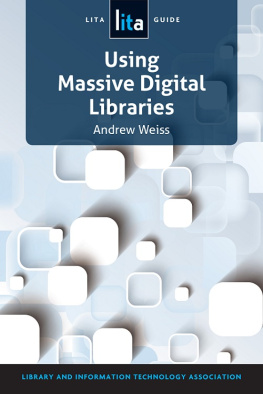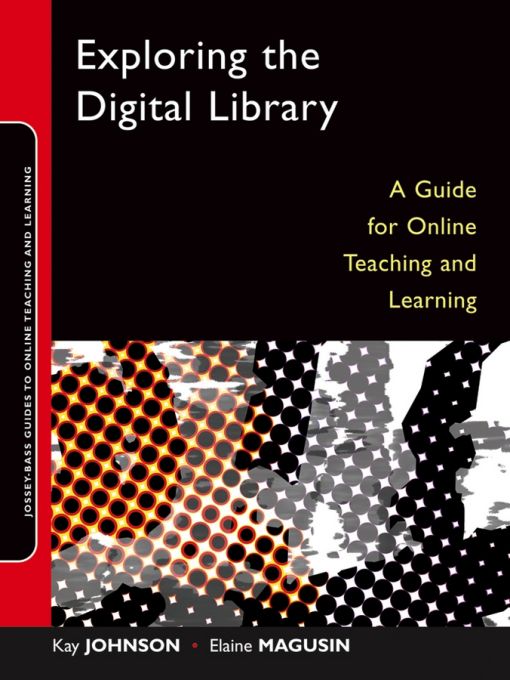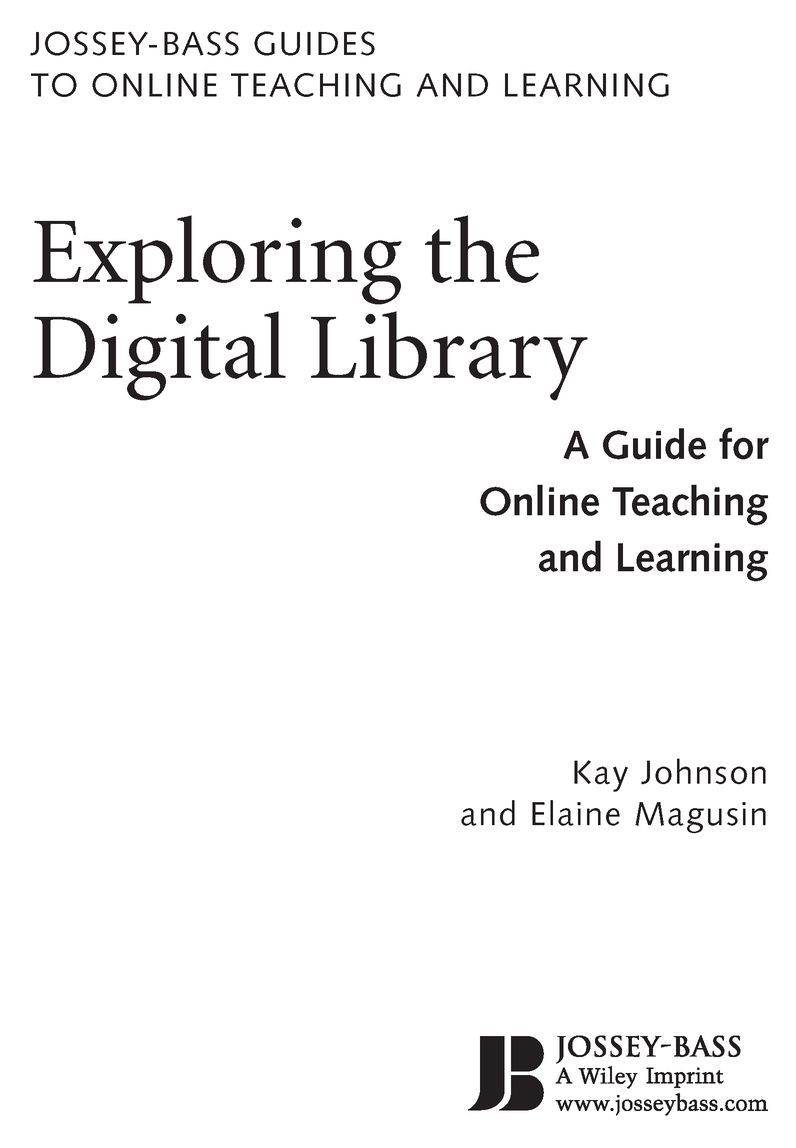Table of Contents
To Neil and Tristan (Kit), and to Jim for all the books.
K. J.
For Mum, Dad, and Heather.
E. M.
Preface
Rapid advances in telecommunications and computer networks are altering the landscape of everyday life. E-mail, search engines, virtual realities, hypertextuality, cyberpunk, and the dot-coms have entered our lives. We live in an age in which governments, economic systems, social services, mass mediathe very foundations of contemporary societyare plugged in to digital technology. This is not to say that our long heritage of print culture is no longer vital, but we are in the midst of a distinctive digital culture. As Charlie Gere, author of Digital Culture, observes: Digitality... encompasses both the artefacts and the systems of signification and communication that most clearly demarcate our contemporary way of life from others (2002, p. 12).
The advent of the Internet, the World Wide Web, electronic publishing, and digital libraries is having a tremendous impact on teaching, learning, and scholarship. New relationships, processes, and issues emerge with the ability to access worldwide digital collections from ones desktop, to exchange ideas and data with colleagues around the globe almost instantaneously, and to publish in multimedia formats. Widespread use of information and communication technologies (ICTs) has led to a growth in distance and online learning and a redefinition of the academic library.
Digital technology is transformational and transformations lead to complex human reactions. The range of responses run the gamut from the techno-whiz who embraces computers wholeheartedly and unquestioningly, to the modern-day Luddite who cautions that nothing good can come of this new machinery. In general, most of us have adapted to computers. We have learned the programs we need to know to complete our work and to amuse ourselves. The problem that we face is that with so many programs, so many ways of interacting with computers, and so many virtual spaces in which to seek out information, it is easy to become completely overwhelmed.
This is not a how to build a digital library book; instead, it is an exploration of digital libraries and digital library culture. When we speak of digital library culture we are drawing from anthropological concepts to illuminate the obstacles that users may experience in interacting with a digital library. Cultural barriers, such as not knowing the language, norms, or customs of a group, can impede understanding. Digital libraries, in addition to having a distinct culture, are characterized by diversity and by change. Searchers face a multiplicity of systems, interfaces, search protocols, and hyperlinked paths. It is easy to get stumped, dazzled, or just lost and bewildered in the electronic labyrinth. As information vendors compete in the marketplace, systems get new looks and other enhancements so that the system you know today may not be exactly the same as the one you log in to tomorrow.
Our experiences as distance librarians at Athabasca University (AU) inform much of what we have written here. Founded in 1970, AU is known as Canadas Open University, a distance education university dedicated to the removal of barriers that restrict access to higher learning. Historically, the university has relied on the fixtures of traditional distance education, such as print-based course packages, contact with tutors by toll-free telephone, and use of the postal system. These methods continue today. But since the 1990s the university, along with distance education postsecondary institutions everywhere, has been working to incorporate online technologies in a manner that is cost-effective, is competitive with other institutions offering online courses, and provides students with a high-quality and flexible learning experience. University and departmental Web pages, learning management systems, e-mail correspondence, computer-mediated communication systems, electronic databases, and digital libraries are some of the new fixtures of distance education as well as of traditional universities as they too venture into online education.
Whether they are involved in distance education or teach on traditional campuses, faculty are increasingly expected to be fluent not only in print culture but in digital culture, and to ensure that their students are fluent as well. This book provides opportunities for faculty to explore the nature of digital libraries and digital library use in higher learning. A broad spectrum of competencies goes into the making of a digital scholar who is capable not only of using digital libraries effectively but of contributing to the scholarly online environment. The symbiotic relationship in which libraries serve the research needs of scholars and in which scholars write the publications that libraries acquire, manage, and provide access to makes a discussion of electronic scholarly communication crucial to our treatment of digital library culture. We offer models for faculty to integrate digital culture into their professional lives, to collaborate in the development of digital libraries, to use online resources to enhance the learning experiences of their students, and to participate in online scholarly communities. Librarians who are seeking to build collaborative relationships with faculty and to promote information literacy and digital scholarship in their institutions will benefit from discussion of these topics, as will university and college administrators and those responsible for faculty development.
Chapter One seeks a cultural understanding of the digital library. We look at the development of digital libraries, transformations in academic libraries, and cultural barriers to successful digital library use.
In Chapter Two we discuss how information and communication technologies, and electronic publishing in particular, are transforming scholarly communication. This brings many opportunities to disseminate ideas and to be creative with media, but there are issues pertaining to the acceptance of electronic publication in the promotion, tenure, and review process.
Chapter Three provides suggestions for faculty to integrate digital libraries into their teaching and course development, so that students have contextual, seamless access to online library resources and services. Faculty play an important role in promoting library use to their students and have an opportunity to model a relationship with the digital library that students can be encouraged to emulate.
In Chapter Four we describe approaches to promoting information literacy skills, and most importantly, integrating these skills across the curriculum. Information literacy is sometimes seen as the responsibility of the library; the reality is that for information literacy initiatives to be truly successful, faculty involvement is crucial.
Chapter Five considers the skills and knowledge required in digital library use. An understanding of principles common to information systems enables searchers to move beyond dependence on a few key systems and strategies and toward a deeper comprehension of information retrieval. The information-seeking behaviors of faculty and students are changing in response to the availability of electronic resources. Access to scholarly and unique digital collections should be increasing the breadth of information resources available to students, yet many instructors find themselves struggling with the poor quality of work their students are turning in. We explore some key challenges that faculty and librarians are facing, including plagiarism and overreliance on limited digital collections.


